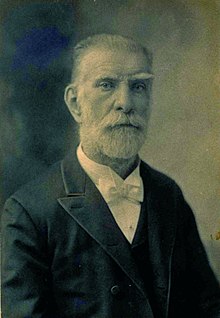Adolph Cluss
| Adolf Cluss | |
|---|---|

Adolf Cluss, 1900
|
|
| Born |
July 14, 1825 Heilbronn, Germany |
| Died | July 24, 1905 (aged 80) Washington D.C., United States |
| Nationality | German-born American |
| Occupation | Architect |
| Buildings |
Arts and Industries Building |
Arts and Industries Building
Caldwell Chapel
Calvary Baptist Church
Charles Sumner School
Eastern Market
Franklin School
Adolf Cluss (July 14, 1825 – July 24, 1905) was a German-born American immigrant who became one of the most important architects in Washington, D.C., in the late 19th century, responsible for the design of numerous schools and other notable public buildings in the capital.
He was born in 1825 in Heilbronn in the Kingdom of Württemberg in south-west Germany. His father was a master builder, and young Cluss set out as an itinerant carpenter when he left Heilbronn at age nineteen. In his travels, he met and became a friend of Karl Marx and a supporter of communist principles at a time of political and revolutionary ferment in Germany. He joined the Communist League and became a member of the Mainz Worker Council. The failure of the German revolutionary movement in 1848 led him to leave Germany when he was twenty-three, along with other Forty-Eighters who emigrated to the United States at that time. In the United States, he continued his political activity into the 1850s, maintaining an extensive correspondence with Marx and Engels and writing and publishing political articles for the German-American community.
Settling in Washington, D.C., Cluss also began building a highly successful practice as an engineer and architect. In the following decades, from the 1860s to the 1890s, he was responsible for designing scores of major public buildings, including at least eleven schools, as well as markets, government buildings, museums, residences and churches. By 1872, he had become City Engineer and a member of the Board of Public Works, overseeing some of the civic improvements that transformed Washington in the 1870s: street paving, sewer construction, and the planting of thousands of street trees.
...
Wikipedia
